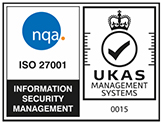Hypoxia occurs when there is a deficiency in the amount of oxygen in the body. It can be throughout the body or in a localised area. Anoxia is where there is no oxygen at all.
Hypoxia can occur for a number of reasons, including breathing in air that has lower quantities of oxygen. This happens at altitude as the amount of oxygen reduces the higher you go. For example at the top of Everest there is a third of the amount of oxygen available at sea level. The normal composition of air is 21% oxygen but with increasing altitude, the amount decreases. Hence at the top of Everest there would be only around 7% oxygen.
Hypoxia therefore means that the availability of oxygen is decreased. This is not quite the same as hypoxaemia.
Oxygen is carried in red blood cells attached to haemoglobin. Haemoglobin, as you may remember from your biology lessons (!) is a protein found in the red blood cells that carries oxygen around your body and gives blood its red colour. Haemoglobin levels vary from person to person. Men usually have higher levels than women.
The oxygen then transfers from the haemoglobin into the tissues surrounding the capillaries (the very fine blood vessels) owing to the relatively lower oxygen levels in that area. The red cells return to the lungs where the de-oxygenated haemoglobin takes up oxygen from the lungs, becoming oxygenated again.
A relatively minor amount of oxygen is carried in dissolved format in the blood. The total amount of oxygen therefore is the sum of the oxygen carried on the haemoglobin plus the amount of dissolved oxygen in the blood. Hypoxaemia specifically means low levels of oxygen in the blood.
People who reside long term at high altitude adapt by increasing the number of red blood cells, so that there is an increased amount of haemoglobin – resulting in a greater uptake of oxygen within the lungs. This might explain how, when I was climbing a 12,500 foot mountain (approx. 13% oxygen at that altitude) in Central America many years ago (when I was much fitter!) I was easily overtaken by an elderly porter carrying a very large rucksack and smoking a cigarette!
Other situations where hypoxia can occur includes the changes during the delivery of a newly born child. These changes reflect the adaption from the in-utero situation where the fetus has been dependent on the placenta for oxygen supply, to the outside world at birth where air breathing is required. This change needs the lungs to inflate, and for the lung fluid that was present within the lungs during the pregnancy to be expelled, so as to allow the intake of air.
Low levels in the blood also occur in certain clinical conditions:
- Anaemia
- Carbon monoxide poisoning – as there is reduced ability of oxygen to bind to haemoglobin
- Certain reactions to drugs, where another form of haemoglobin is formed, called methaemoglobin
The impact of low levels of oxygen at a cellular level
At a tissue level, the oxygen moves from the haemoglobin by diffusion into the surrounding cells and enters mitochondria. Mitochondria are the equivalent to tiny power stations, producing energy by the oxidation of substrates to transform low energy level molecules to higher energy levels which are used to power reactions (many of them by catalysts, e.g. by enzymes). These reactions are part of the aerobe form of metabolism that each healthy working cell conducts. When there is insufficient oxygen in the cell, metabolism may alter to become anaerobic. This is a less efficient system of producing energy and leaves by-products that can eventually become harmful to the cell.
This change in metabolism, from aerobic to anaerobic metabolism, gives rise to the formation of lactic acid.
Clinical features of generalised hypoxia
The extent of these features depend on the severity of the degree of hypoxia (death arises from sustained anoxia) and how quickly the onset of the low level occurs.
Altitude sickness is an example of where hypoxia develops as the person ascends, featuring nausea, vomiting, a feeling of light headedness evolving into headache, decreasing level of consciousness and breathlessness. The amount of effort required to undertake relatively simple task such as walking can be enormous. People with severe form of altitude sickness are at high risk of death. Signs include bradycardia (slow heart rate), cyanosis (blueish lips, tongue) and hypotension.
In severe illness, with multi-organ failure, the tissues demand for oxygen may outstrip supply and features of hypoxia can appear. Examples of this are seen in toxic shock syndrome. Other forms of severe illness can also produce a failure in the delivery of oxygen to tissues. In these situations, similar clinical features as in altitude sickness may be seen.
Localised features
Poor tissue perfusion leads to pallor, and it being cold. With cyanosis, the colouration of the tissue may change to showing cyanosis. Sustained low levels of oxygenation can lead to tissue death and even the development of localised infections as the local immune defence systems will fail. Gangrene can develop as a result.
If you want further information about this particular topic, or wish to discuss the possibility of bringing a claim where Hypoxia may have occurred, perhaps during child birth, please contact the Dutton Gregory Clinical Negligence Team on (01202) 315005, or email k.marden@duttongregory.co.uk






